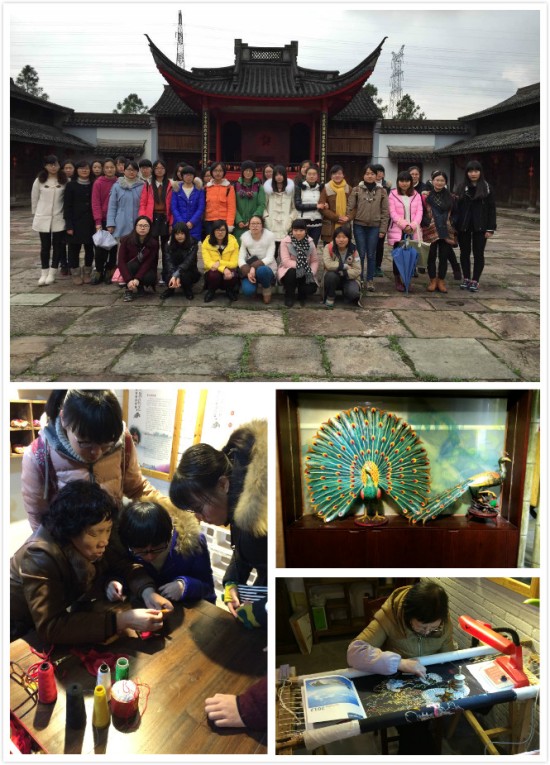On March 6, 2015, students enrolled in the Yangming Course paid a special visit to the Yinzhou Intangible Cultural Heritage Museum. This course, which aims to promote the study and dissemination of traditional Chinese culture, is named after the famous ancient Chinese scholar, Wang Yangming.

The Yangming Course was founded by NIT’s School of Foreign Language Studies. Its goal is to encourage its students to volunteer to teach Mandarin Chinese to foreigners in Ningbo and thereby to spread Chinese culture beyond our country’s borders. The core principle of the course, “Harmony of knowledge and action”, is taken from the teachings of Wang Yangming.
The visit to the Yinzhou museum was the perfect opportunity to experience this principle. Before they departed for the tour, students were divided into groups on the basis of their particular interests in various traditional cultural pursuits such as paper cutting, kite[S1] making and so on. Students also shared ideas on the best ways to spread the values and benefits of Chinese culture in order to preserve our country’s long and diverse cultural heritage. Then, they were off to the museum!
Upon entering the Intangible Cultural Heritage Museum, one student remarked, “The museum’s architecture and atmosphere is amazing!” After touring the numerous exhibits for a while, another student told this NIT Post reporter, “The museum attendants gave us a very warm welcome, answered our questions patiently, and freely shared their own understanding of traditional Chinese art forms. The ancients were such great artists, and their creations are so beautiful. This visit has been a wonderful experience!”
Later on, this reporter encountered another enthusiastic student who commented, “From this visit, I gained a better understanding of Yinzhou’s intangible cultural heritage and of the arts and culture of eastern Zhejiang province in ancient times. The beauty and importance of Chinese traditional culture has become a part of me and will remain in my heart always. Without a doubt, my friends and I will continue to do whatever we can to assume the responsibility of appreciating and preserving such treasures, as well as spreading the word to others about the beauty and magnificence of ancient Chinese art and culture.”
For the students of Yangming Course, the museum visit not only widened their horizons by enabling them to see in person some of the greatest examples of ancient stone carving, paper cutting and embroidery, but it also inspired them to learn more about our precious heritage so they can be confident in their efforts to share and disseminate the value of Chinese culture to others in our community.